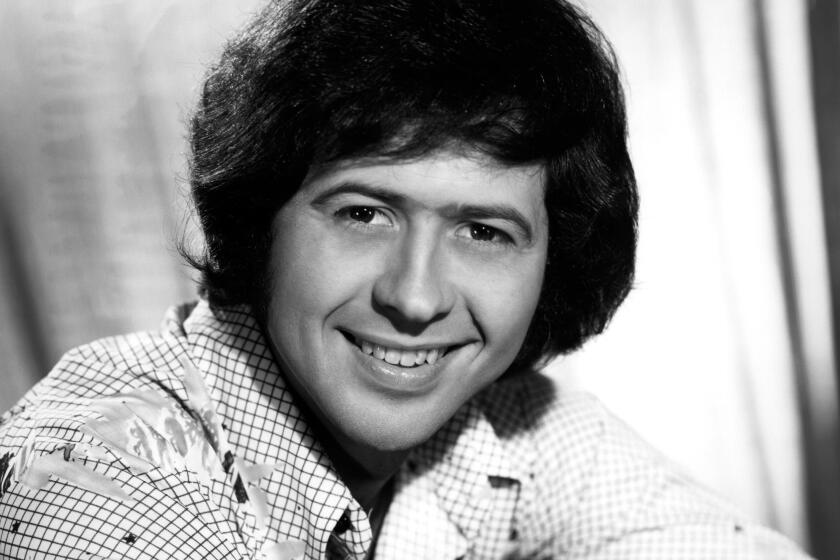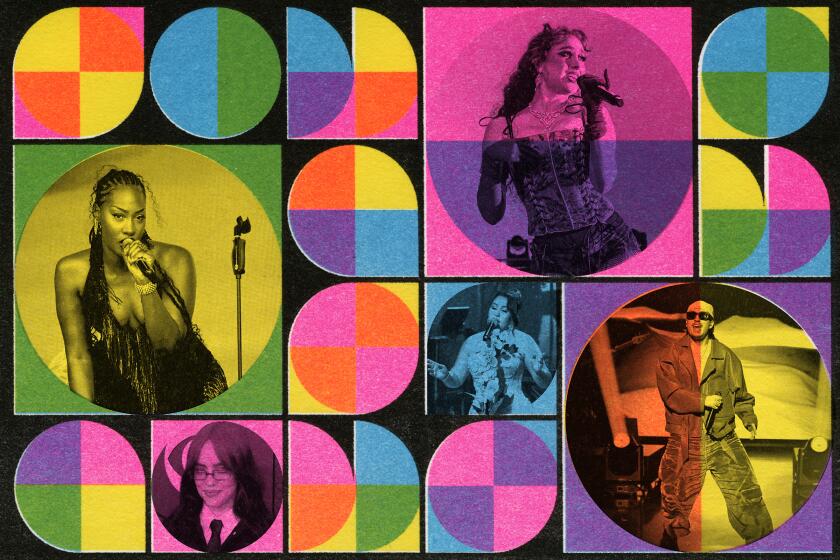Anderson .Paak loves L.A. What does he do when it stops loving him back?
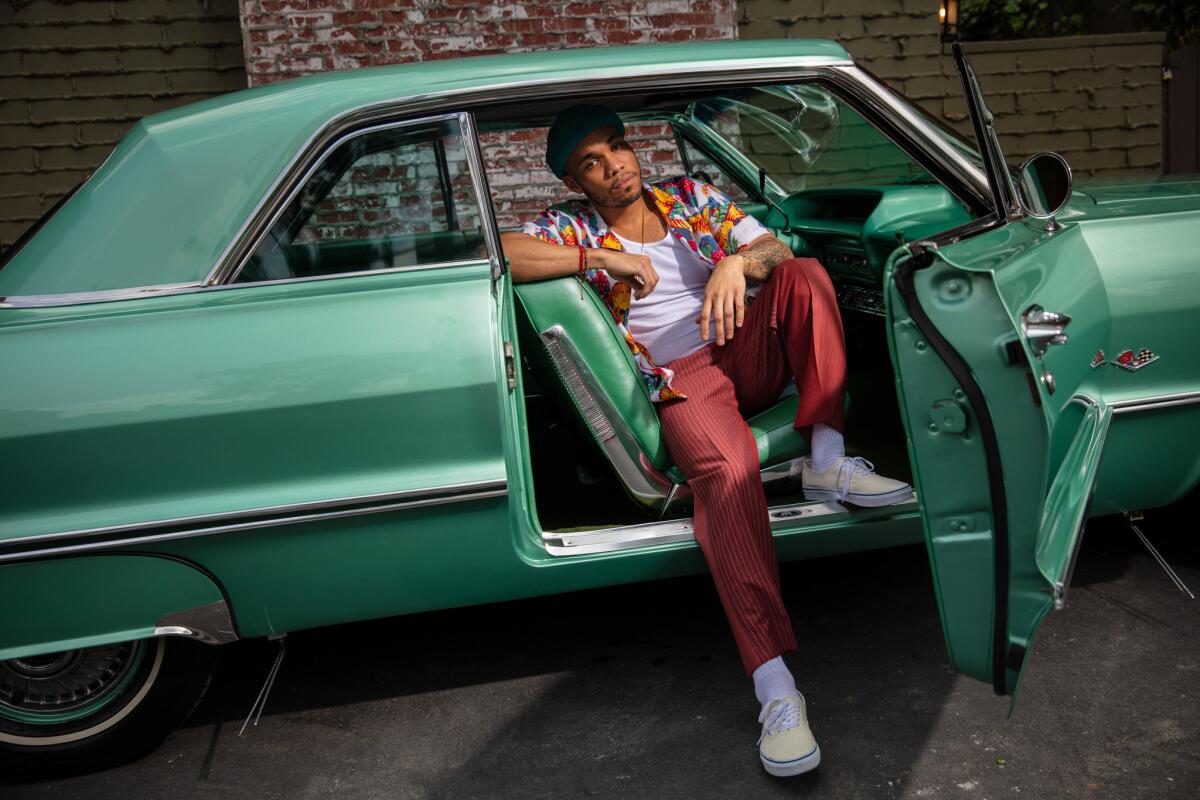
It’s rare to find Anderson .Paak without a wide smile plastered across his face. He’s the type that barrels into a room with abundant gusto, his entrance typically punctuated with a shriek of his catchphrase — “Yes Lawd!” — delivered like a preacher shouting from the pulpit.
But today, that toothy grin is hard to come by when he arrives at the two-story North Hollywood lair housing his studio and office.
No sooner had he returned home from a gig in Austria, where he wrapped his Andy’s Beach Club tour, than he got word that Nipsey Hussle was killed in front of his South L.A. clothing store. Still raw from his friend Mac Miller’s death seven months ago – a large portrait of the rapper rests in one room — the loss of another peer has left him shaken.
“Los Angeles got me a little vexed right now,” the 33-year-old says as he watches a steady flow of cars zip past the window, his hands permanently clutched to a large iced coffee he barely sips.
“Nipsey was just a hero,” he continues, his voice cracking. “A lot of people talk about doing what they can, but he was really out there trying to change the next generation. To be slain like that in front of what you built, it makes you want to lay low. It’s depressing, and it made me think about my bro Mac. They both loved life so much, and it’s completely unnecessary that they went out.”
He sits in silence for a moment, before letting out a deep sigh.
Days later, the genre-stretching singer-rapper-drummer-producer would release his new album “Ventura” and perform on the mainstage at Coachella — where he sweetly paid tribute to his friends by performing his collaboration (2016’s “Dang!”) with Miller and basking the stage with bright blue lights, an homage to Hussle’s Crip ties.
Then he’s right back on tour, headlining arenas with his band the Free Nationals after years of playing festivals and opening for Bruno Mars, J. Cole and Beyoncé.
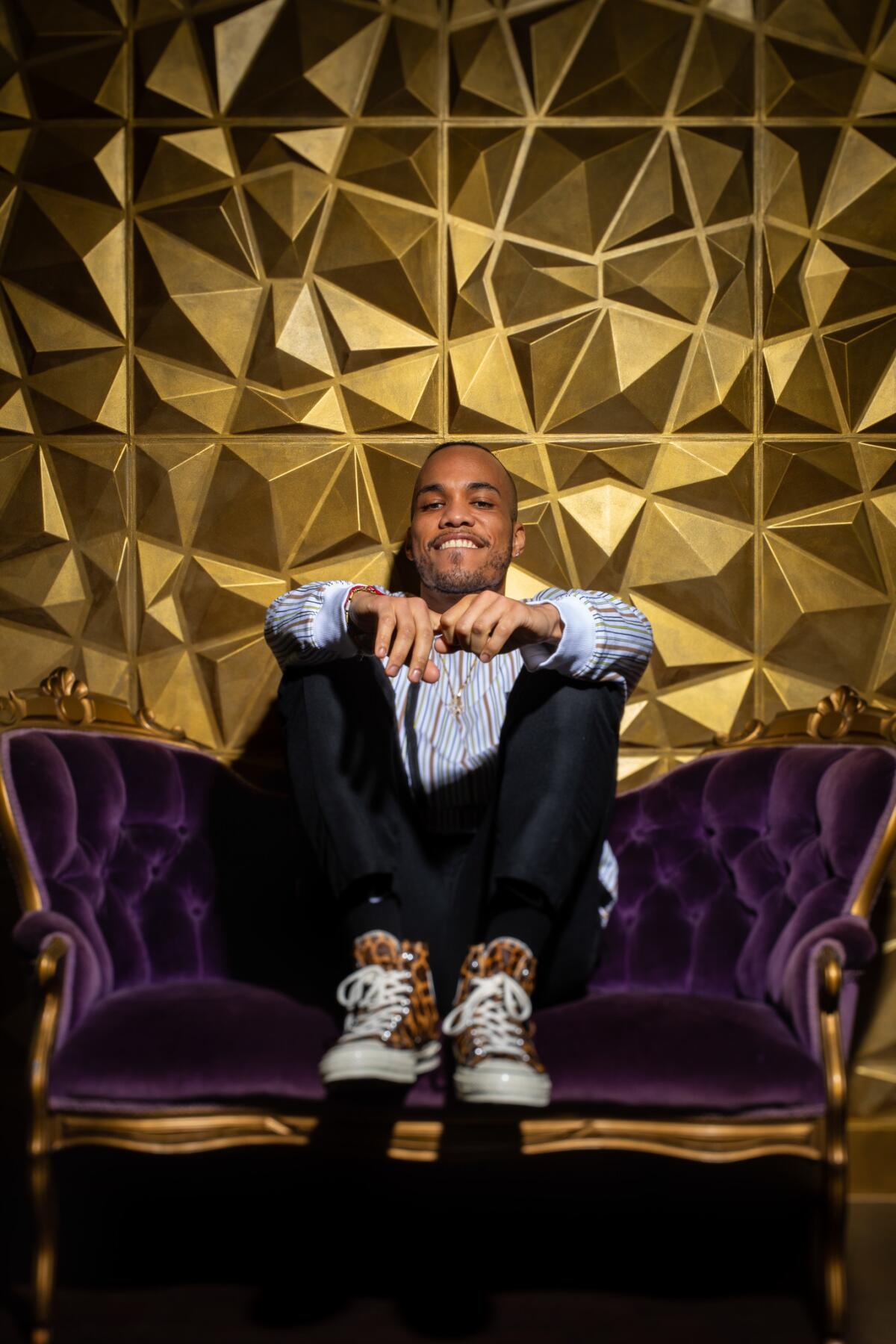
FULL COVERAGE: Coachella 2019 »
“Ventura” finds Anderson .Paak at a curious point in his career.
While he’s touring larger venues and won a Grammy in February, tying with Kendrick Lamar for best rap performance, he’s barely six months removed from his last offering, “Oxnard,” an album that veered sharply from his acclaimed Grammy-nominated 2016 breakout “Malibu.”
Instead of the vivacious, lush psychedelic soul that anchored “Malibu,” “Oxnard” featured gritty raps heavily influenced by the dense, rail-splitting G-funk of mentor Dr. Dre, who served as its executive producer)
Critics weren’t feeling it. Some fans were perplexed. “Oxnard” was his highest-charting project yet, but at what cost?
“People felt really strongly,” he says. “Some thought it was great, but there were people saying it was the worst I’d done. That I didn’t need Dre. That I can’t rap. It stung.
“[But] you can’t please everyone,” he continues. “I have to satisfy my needs and broaden my fanbase, and I can’t do that by doing the same thing and expecting the same result. It’s trippy though, because the more you start selling – not that sales mean much in the end — the more you hear people say they miss ‘the old you.’”
“Venutra” will undoubtedly register as a return to form for fans of the funkier side of Anderson, as the album radiates with warm, elegant soul arrangements and breezy vibes.
Anderson wanted an album of “feel good music … to build people up,” following a year in which, as his star rose, he increasingly began to feel isolated from friends. Years of partying on the road had also taken its toll.
“People tell you, ‘Try to stay grounded, stay with the people that keep you grounded.’ But when you looking around and your closest friends are either growing with you or not, what do you do?” he said. “I was being loyal to a fault almost and I had to do a lot of shedding. That was tough.” Anderson switched up his management team. Dre took a step back, and let Anderson take full charge on “Ventura,” which also features collaborations with Pharell Williams, André 3000, Smokey Robinson, Lalah Hathaway, Jazmine Sullivan and Brandy, and a posthumous vocal from Nate Dogg.
Some thought it was great, but there were people saying it was the worst I’d done. That I didn’t need Dre. That I can’t rap. It stung.
— Anderson .Paak on the criticisms he faced over “Oxnard.”
“Ventura” continues the performer’s series of releases themed after patches of the California coast to which he has a connection, beginning with his 2014 debut “Venice” and concluding with two albums he recorded simultaneously — the gritty “Oxnard” and the pretty “Ventura.”
“With ‘Oxnard’ we were overthinking some of it. Building on songs and picking them apart, trying a lot of different things. But with ‘Ventura’ I kept the music the same and just incubated it, with the exception of a few songs. I knew ‘Oxnard’ would be a departure for people, so I was ready to bust them in the head with the soul stuff,” he explains.
Grit was never too from what the artist born Brandon Paak Anderson has known on his journey to the pretty.
He’s sung about his father going to prison for drug possession and nearly beating his mother to death; watching his mom and stepdad get locked up for tax-related issues; and being homeless — Paak couch-surfed after money from a string of odd jobs ran out.
For years Anderson was grinding on the L.A. music scene while trying to find his sound – a 2014 single, a minimalist banger called “Drugs,” got him major play at Low End Theory, a flagship club night for L.A.’s beat scene – before catching the attention of Dr. Dre, who then drafted him for his “Compton” album and later signed him to his Aftermath Entertainment imprint.
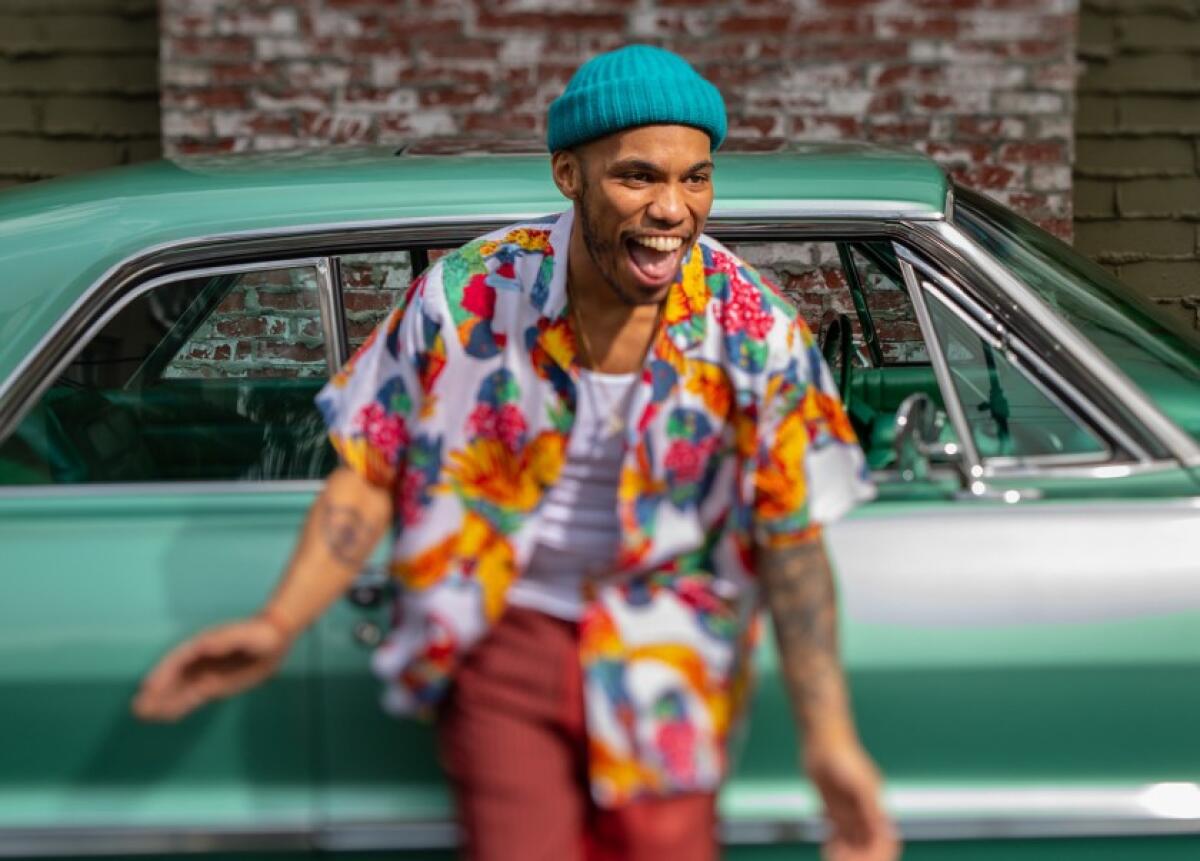
It was in the sessions for Dre’s album that Anderson found the direction for his then-in-progress second album, “Malibu.”
The album was a layer cake of ‘70s-era soul, psychedelic funk, jazz, rock, boom bap, beat-driven electronic music and contemporary R&B that announced Anderson as a soul-hip-hop visionary and catapulted him into the mainstream orbit seemingly overnight.
“It’s been a bit of a blur since [“Malibu”]. So many tours. Cutting so much music. I’ve smoked so much weed and drank so much tequila,” Anderson says, his face widening with a grin for the first time in conversation. “I didn’t expect my world to become what it did, to go from someone no one was talking about to dropping a project that got a cult following.”
Almost immediately after the release of “Malibu,” Anderson began recording the music that would become “Oxnard” and “Ventura” – fitting in studio sessions between his surging demand as a live act.

Yet, the sessions were fraught with tension. Anderson struggled to lock down the collaborators he’d assembled for “Malibu,” his backing band was anxious to work on its own music, and then there was the matter of Dr. Dre, who was eager to work closely with his protégé for the first time since “Compton” — and is notorious for his perfectionism. (“Oxnard” marked Anderson’s Aftermath debut.)
“When Dre produces his stamp is all over it. It ain’t subtle. It’s a grandiose production … and I had to learn how to work with a producer of his caliber,” Anderson said.
Early into recording, two distinct song types — lush soul-fusions anchored by his silky rasp and bass-rattling raps showcasing a nimble MC with a point to prove – had emerged.
“For two years he was working on the album. He had a whole vibe going and he felt comfortable with it. And then he got in with Dre, and it became a whole different sound,” recalled Ron Avant, who’s been playing with Anderson since 2008 as a member of the Free Nationals.
Anderson had to convince Dre to see the project as a dual offering, a vision made tougher when four albums’ worth of material spilled out of sessions.
“He didn’t get it at first,” Anderson recalled. “He’s scratching his head and looking at me like, ‘I don’t know man, I think you should do one good album.’ But he came around. I had a lot of anxiety with ‘Oxnard,’ stressing until the last minute and battling with the label. It was a big, long roll out. And I’d just had a baby [his son, Shine, was born in 2017, his second child with wife, Jae Lin]. It was a lot. I didn’t want to look like a flop.”
Anderson is feeling less anxious this time around. And who can blame him? The music has been well-received by critics and fans; he was among the highlights during the first weekend of Coachella; and the first leg of his tour kicks off in a few weeks.
“I want to open the lane for more hip-hop artists to sing and rap and play instruments,” he says. “I don’t know if people always understood that that’s what I’m trying to do, but I’m confident in what I do. I’ve had to stop giving a damn about what people say about the music.”
For more music news follow me on Twitter:@GerrickKennedy
More to Read
The biggest entertainment stories
Get our big stories about Hollywood, film, television, music, arts, culture and more right in your inbox as soon as they publish.
You may occasionally receive promotional content from the Los Angeles Times.








